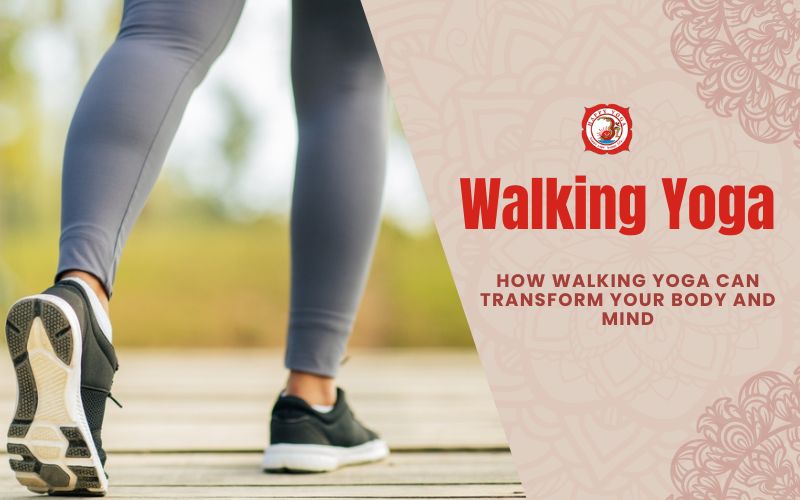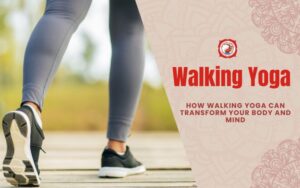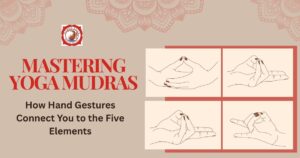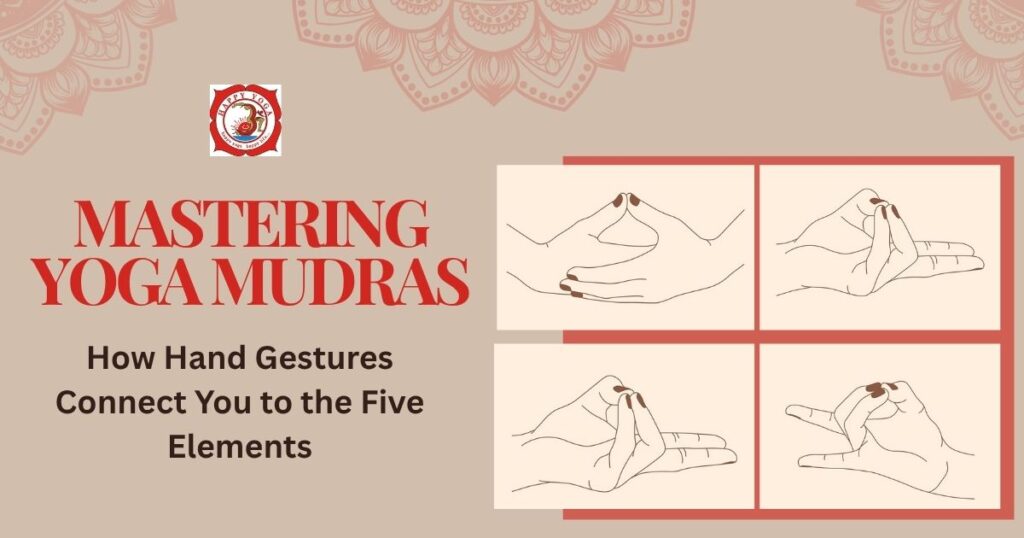In today’s time, high stress levels, anxiety, and inactive lifestyles are common complaints. The World Health Organization (WHO) estimates that over 264 million people globally suffer from depression, and more than five million people die each year due to physical inactivity (WHO, 2023). With such a rising number of cases of such phenomena, people are now looking for easy ways to improve their mental as well as physical health without needing to do strenuous workouts. Walking yoga, which combines the free and gentle movement of walking with the mindfulness of yoga, provides an easy solution. During this practice, one’s focus is on each step, each breath, and each sensation, promoting relaxation and well-being.
Walking yoga is not just exercise, but a meditative practice in which you synchronize your breath, mind as well as body. Unlike a regular yoga practice, which usually needs a mat and specific clothes or space, walking yoga is something you can do anywhere, at any time, and in any outfit.
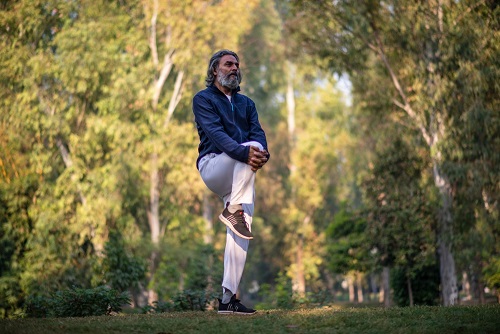
What is Walking Yoga?
Walk yoga is a form of yoga that focuses on mindful and slow walking combined with controlled breathing as well as meditation. Unlike casual walking, which often leads to mental wandering, walk yoga encourages full engagement with each step. This practice transforms the ordinary into a state of awareness.
This idea of walking mindfully goes back to yoga as well as Buddhist practices. In yoga philosophy, the connection between breath, mind, and body is described as a powerful key to balance.
Walking yoga involves moving slowly, breathing deeply, and noticing your thoughts without any judgment.
The Philosophy of Walking Yoga
Yoga is more than just the poses (asanas) performed on the mat; it is a lifestyle that emphasizes consciousness and awareness. Walking yoga embodies this philosophy by integrating mindfulness into daily movement. With each step, you have an opportunity to stay present, breathe, and be aware of your surroundings.
The exercise cultivates the principle of “being here and now.” Neither dwelling on the past nor racing to the future, walking yoga enables you to be present and mindful in the here and now.
Walking yoga, by contrast, also roots us to the element of earth. With each step, we feel grounded, steady, and supported—much like the classic yoga pose Tadasana (Mountain Pose).
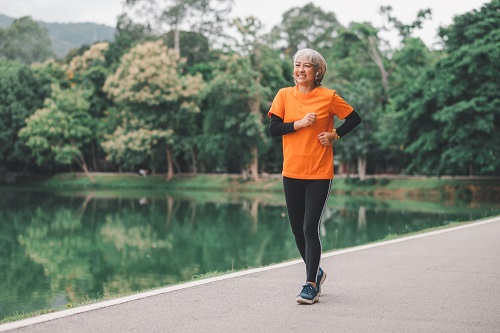
The Science Behind Walking Yoga
Research supports the effectiveness of walking yoga. Studies published in The BMJ have shown that mindful walking offers numerous benefits, including reduced depressive symptoms, improved mood, and enhanced cognitive function. (BMJ, 2022)
What Walking Yoga Does to Your Brain and Body:
- Reduction in Stress: As long as you keep practising mindful walking, cortisol levels drop; eventually, relaxation will replace stress.
- Heart Health: Walking raises blood circulation and keeps the heart healthy, so that people are less likely to suffer from hypertension.
- Cognitive Function: Regular practice of walking meditation promotes clear mental clarity, sharper memory, and better focus, even over time.
- Mind and Emotions: By allowing the practitioner to notice how emotions arise in the body through stability and relaxation of movement and breath, yoga gently ahead of them brings this process into consciousness.
Physical Benefits of Walking Yoga
Yoga walk has several physical benefits and is good for everybody at any age.
- Increases Stamina and Endurance: After a period of practice, you will find that your overall energy level is higher. You will be able to go walking longer.
- Advances Flexibility and Balance: By using gentle stretching and mindfulness, the body’s aches and pains are relieved while joint health improves.
- Good for the Heart: It also gets your bloodstream flowing well and your heart beating strongly, just like walking would do in town.
- Aids Digestion and Metabolism: Walking meditation can help to improve digestion, particularly after meals.
- Promotes & Improves Posture: Concentrating on your alignment and breath will lengthen your spine, and release body aches.
- Mild Weight Maintenance: Walking meditation’s regular movement can lead to minor weight loss by keeping the body in motion.
Walking yoga is low-impact and effective for all levels. Unlike intense workouts, this is easy on your body while being excellent for your body, making it ideal for the older audience and those who are recovering from an illness.
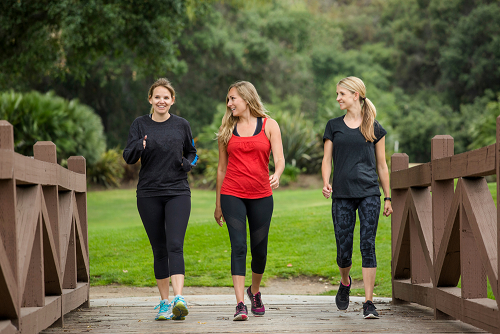
Mental Benefits of Walking Yoga
Walking mindfully is a great way to decrease stress, anxiety, and mental fatigue:
- Stress Relief: Doing yoga walking has been shown to keep your mind off negative thoughts. This can let you feel at ease and less irritated.
- Better Focus and Concentration: By concentrating on your breathing and the way you move, you can enhance your brainpower and improve your attention span.
- Greater Mindfulness: When you are walking in the fields, you seem more than just in time. This makes recollections from past lives irrelevant and makes each experience more enjoyable.
- Heightened Creativity: You probably didn’t know that walking can stir up new ideas. Tying this with a little mindfulness will intensify your ability to solve creative problems! Emotional Stability.
Emotional and Spiritual Benefits
This practice is also good for the emotional:
- Emotional Stability: If you want to let off all of that pent-up emotion, why not try walking with mindfulness? You’ll feel less anxious and more balanced in no time.
- Inner Calm: Through focusing on your breath and mindful movement, your body’s natural relaxation system is awoken – making it even easier to unwind and feel good.
- Spiritual Awareness: This other part of nature, the sense itself, becomes deeper as people become closer to their own essence through these exercises. A wonderful feeling of peace and satisfaction is produced by this.
Walking Yoga: How to Practice (Step-by-Step Guide)
Walking yoga is easy but mindful. Here’s how you can practice:
- Pick the Right Place: Choose a quiet location such as a park, garden, or even somewhere quiet indoors.
- Get Ready: Put on loose clothes, and put your phone away to eliminate distractions.
- Stand Meditatively: Start by standing quietly, connecting with your breathing and bringing your attention to the here and now.
- Walk Slowly: Walk at a slow pace, and feel the ground with each step.
- Breathe Through: Normally, change your steps with breathing, as you inhale for some steps and then exhale for the next few steps. Keep a steady rhythm.
- Observe: Listen to sounds or notice smells and feel the air on your skin with no judgment.
- Mind Your Posture: While doing this, focus on keeping your back straight, your shoulders relaxed, and your gaze soft.
- End on a Mindful Note: Finish by standing still, taking three deep breaths, and considering something you are grateful for.
This walking session can last anywhere from 10 to 45 minutes, depending on your comfort level.
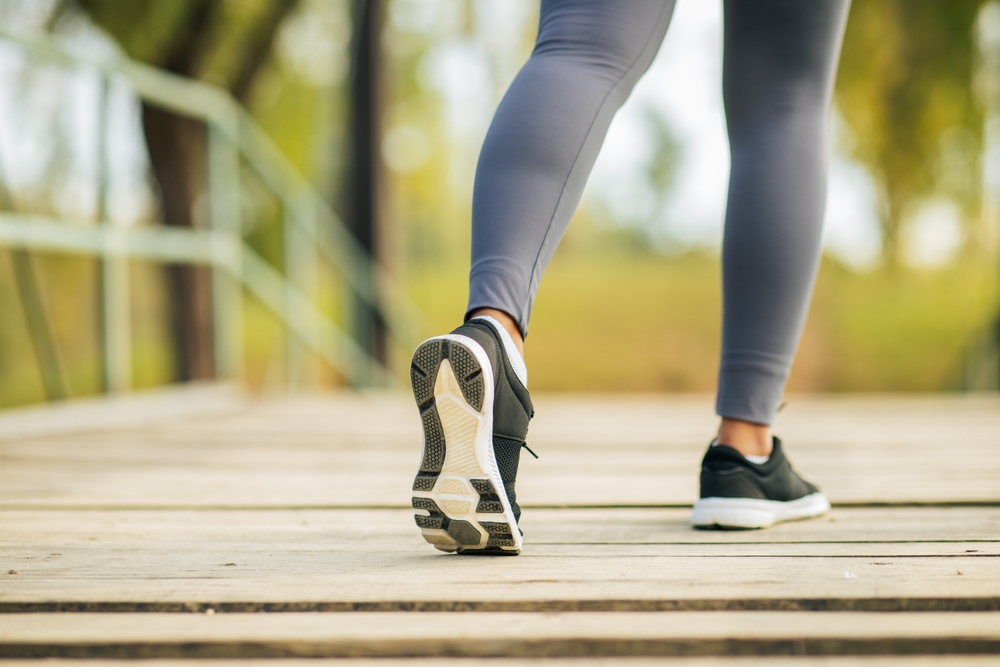
Walking Yoga Techniques and Variations
There are multiple ways to practise walking yoga:
- Slow Mindful Walking: Walking slowly and concentrating on the step and the breath.
- Breath Synchronised Walking: Coordinating breath with the number of steps taken.
- Mantra Walk: Telling yourself silently, and with each step, a positive sentence or statement.
- Walking Yoga Group: Group practice to multiply the energy and motivation.
- Nature Walking Yoga: This allows for a deep connection with nature while practising yoga in forests, gardens, or at the beach.
Both versions have their advantages, and you can decide based on mood and convenience.
Walking Yoga vs Regular Walking
Many people wonder—how is walking yoga different from normal walking?
- Awareness: The mind can roam while taking a stroll; walking yoga demands attention.
- Breath Connection: Standard walking emphasises only movement, while walking yoga incorporates the breath.
- Purpose: Walking yoga is not only for the body but also for the mind.
- Result: Regular walking rejuvenates the body — doing yoga, walking rejuvenates the body and mind.
That makes walking yoga a more mindful, restorative version of walking as usual.
Who Should Practise Walking Yoga?
Walking yoga is suitable for everyone; however, it is particularly good for:
- Beginners: Walking yoga is a great way to ease into yoga, even if you’ve never tried it before!
- Elderly: It’s gentle and perfect for seniors with limited mobility, making it easy to enjoy.
- Office Workers and Students: Feeling stressed? Walking yoga is a fantastic way to relieve pressure, boost your mood, and help you feel refreshed at your desk!
- People With Health Concerns: If you can’t do high-impact workouts, walking yoga offers a safe and enjoyable alternative.
- Precautions: Of course, it’s always a good idea to check with your doctor before starting, especially if you have serious injuries, balance issues, or heart concerns. Your well-being comes first!
How to Do Walking Yoga to Have a Productive Session
Here are some tips to get the best results:
- Get outside in natural surroundings as much as you can.
- Remember to breathe steadily and lightly.
- Practice at the same time each day.
- Stay focused; no phones, music, or distractions.
- Start slowly (short sessions) and gradually increase time.
- Keep a journal of your experiences as a measure of progress.
These little actions will help turn walking into a meaningful habit.
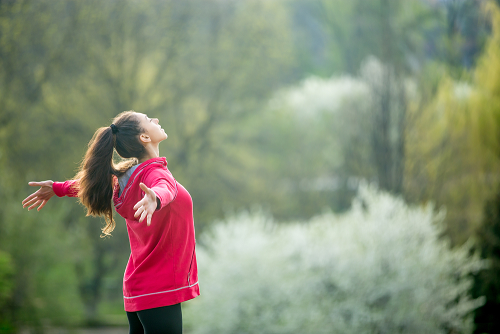
Walking Yoga in Daily Life
Walking yoga is so easy to make a part of your lifestyle.
- Morning Routine: Power it up with a mindful walk in the morning to begin your day.
- Work Breaks: Do walking yoga for a few minutes during office breaks to freshen up your mind.
- Post-Meal Strolling: A light stroll (mindful walking) after meals is good for digestion.
- Evening Relaxation: Even a quick stroll at/around sunset will do much to relax a busy mind from a busy day.
When walked regularly, walking yoga is a natural stress-reducing practice.
The Modern Yoga Trend: Walking Your Way to Wellness
But today, wellness isn’t just about fitness — it is also about mental health and mindfulness. Walking yoga is right on trend.
- Walking yoga is being incorporated into yoga retreats and teacher training programs at yoga schools.
- Walking meditation has become even popular among the corporate companies for reducing stress in their employees.
- Several wellness resorts internationally include mindful walking as an offering in their program.
Also Read – 5 Easy Yoga Mudras for Good Sleep & Insomnia
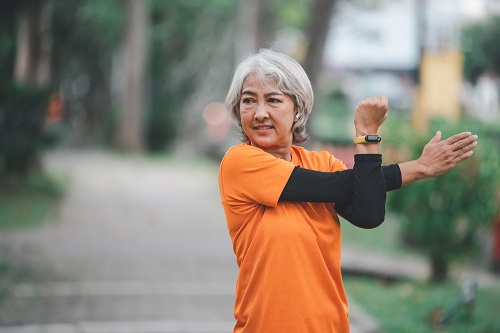
Conclusion
Walking yoga is an easy, practical way to support the health of your body and your mind. It takes the physical benefits of walking and blends them with the meditation and mental clarity you get from yoga. It can be practiced by anyone, of any age, of any level of fitness, and you will experience extraordinary change.
Incorporate this walking yoga into your day and feel the benefits of more energy, decreased anxiety, improved focus, and a steadier mind. In our yoga institute, we motivate and help the students to practice yoga walking for their complete health. And recall, each step of mindfulness is a step towards balance, peace and change.

200 Hour Yoga Teacher Training Rishikesh || 300 Hour Yoga Teacher Training Rishikesh || 500 Hour Yoga Teacher Training Rishikesh || Yoga Retreats in Rishikesh
FAQ – Walking Yoga
Q1. How is walking yoga different from walking meditation?
Ans: Walking meditation is typically slower and carries the aim of just paying attention; it combines yogic principles with mindful movement and breath.
Q2. Is Walking Yoga for Beginners?
Ans: Absolutely, anyone can begin walking yoga — even beginners who have never practiced yoga before.
Q3. How long should a walking yoga practice last?
Ans: Begin with 10–15 minutes and gradually work up to 30–45 minutes.
Q4. Will walking yoga help me lose weight?
Ans: Yes, it helps in weight management if it is accompanied by a proper diet, as the body is continuously in movement.
Q5. Is yoga walking safe for the elderly?
Ans: Absolutely. It is actually one of the safest forms of yoga for seniors because of its soft and slow poses.

